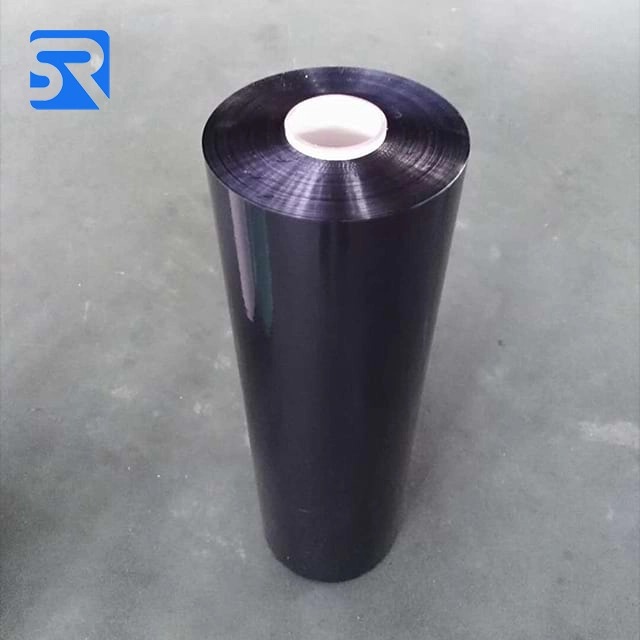
Silage film plays a crucial role in modern agricultural practices, ensuring that harvested crops retain their nutritional value for livestock. Choosing the correct thickness of silage film is essential for effective preservation, preventing spoilage, and ensuring long-term storage efficiency. Farmers and agricultural professionals must carefully consider various factors when selecting the appropriate silage film, including crop type, storage duration, environmental conditions, and handling practices.
Importance of Silage Film in Crop Preservation
Silage film acts as a barrier between the harvested forage and external elements such as oxygen, moisture, and UV light. The primary goal of silage storage is to create anaerobic conditions, which prevent the growth of undesirable bacteria and fungi. An improperly selected film thickness can compromise the silage quality, leading to nutrient loss and reduced livestock performance. For example, thinner films may tear easily during handling or exposure to sharp objects, while overly thick films could result in unnecessary material costs without significant preservation benefits. Therefore, understanding the balance between protection and cost-efficiency is fundamental.

Factors Influencing Recommended Silage Film Thickness
Several factors influence the recommended thickness of silage film. First, the type of forage significantly impacts film requirements. High-moisture crops such as corn or grass silage may need thicker films to prevent leakage and withstand fermentation gases. Second, storage conditions like exposure to sunlight, wind, and temperature fluctuations can affect the film's durability. Third, the duration of storage also determines the optimal thickness: long-term silage storage typically requires more robust films to avoid punctures or degradation over time. Considering these variables ensures that the selected silage film performs effectively under field conditions.
Standard Thickness Recommendations
While exact recommendations may vary, silage films generally range from 25 to 50 microns in thickness. Here’s a breakdown of common thickness applications:
| Thickness (microns) | Typical Use Case | Advantages | Considerations |
|---|---|---|---|
| 25–30 | Short-term silage | Cost-effective, easy handling | May puncture easily, less durable in rough conditions |
| 35–40 | Medium-term storage | Balanced protection and cost | Suitable for most forage types |
| 45–50 | Long-term storage or high-moisture crops | Enhanced puncture resistance, superior durability | Higher cost, heavier handling |
By understanding these categories, farmers can select a silage film that provides sufficient protection without incurring unnecessary expenses.
Benefits of Using Optimal Silage Film Thickness
Using the recommended silage film thickness offers multiple benefits. Proper thickness minimizes air infiltration, reducing the risk of spoilage and mold growth. It also ensures consistent fermentation, maintaining the forage’s nutritional content. Additionally, optimal film thickness prevents physical damage during transportation, filling, or handling, reducing overall waste. By investing in appropriate silage films, farms can achieve higher feed efficiency, improve livestock health, and lower long-term operational costs.
Practical Considerations for Film Selection
When selecting silage film, practical considerations include handling ease, storage conditions, and machinery compatibility. Thicker films may require specialized equipment for stretching or sealing, while thinner films offer easier manual handling. Moreover, UV resistance and anti-tear properties should be assessed, especially in regions with strong sunlight or harsh weather. Farmers should also consider the environmental impact of disposal and recycling of silage films, balancing operational needs with sustainability goals.

Frequently Asked Questions (FAQ)
Q1: Can I use thinner silage film to save costs?
While thinner films are more affordable, they are prone to punctures and tears, which can compromise the silage quality. For short-term storage in controlled environments, thinner films may suffice, but they are generally not recommended for long-term use.
Q2: Is it necessary to use multi-layer silage film?
Multi-layer films provide superior oxygen barrier properties, increased strength, and longer durability. While they may be more expensive, the benefits often outweigh the costs for medium- to long-term silage storage.
Q3: How does crop type affect film thickness choice?
High-moisture crops require thicker films to prevent leakage and withstand fermentation gases. Dry crops may tolerate slightly thinner films without compromising preservation.
Q4: Can weather conditions impact film performance?
Yes. High UV exposure, wind, and temperature fluctuations can degrade film quality over time. Films designed for outdoor use with UV stabilizers offer longer durability and better performance.
Conclusion
Selecting the correct silage film thickness is a critical decision in agricultural management. By considering crop type, storage duration, environmental conditions, and practical handling requirements, farmers can maximize forage preservation, reduce waste, and ensure high-quality feed for livestock. Recommended thicknesses generally range from 25 to 50 microns, with the choice dependent on specific storage needs. Investing in the right silage film ultimately enhances efficiency, lowers costs, and supports sustainable farming practices.









